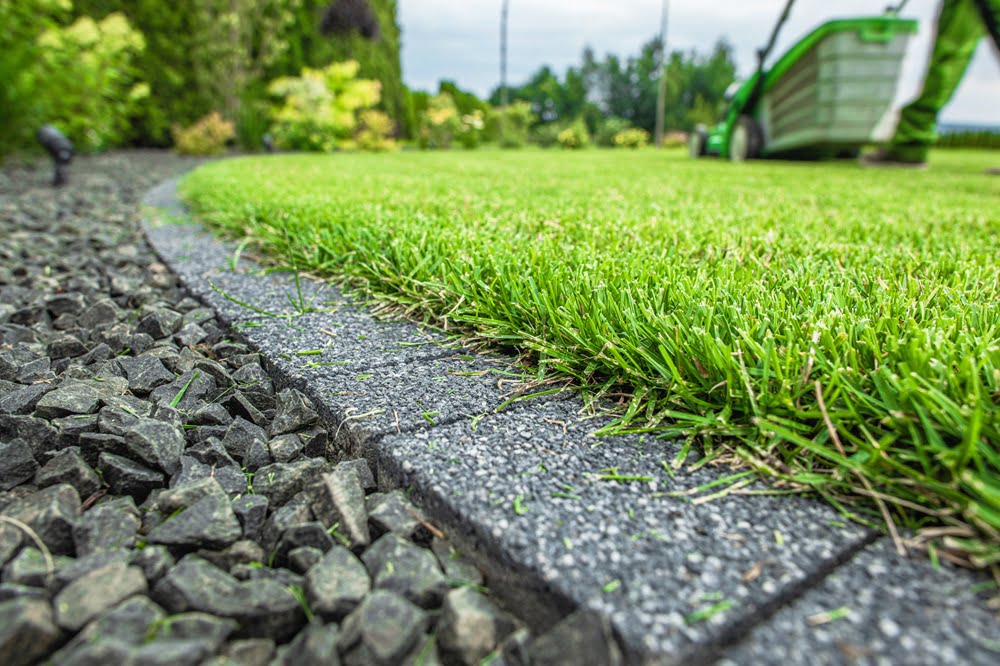
The aesthetics and functionality of any garden depend on many details, and one of the most important elements is the garden edging. They create an effective barrier between the lawn and other parts of the garden, such as paths, flower beds or flowerbeds. They make gardens look neat and tidy. However, choosing the right lawn edging is not easy. Not only do we need to decide what material to make them of, but also what height is appropriate to create an effective barrier, but also to remain aesthetically pleasing and functional.
Garden edgings perform several key functions in a green space. First of all, the use of appropriate edging helps to keep the garden neat by separating the different zones — lawn, flower beds, paths. In addition, the use of well-chosen edging maintains the aesthetics of the whole environment, emphasising the individual character of the garden space. Garden edging can be a striking accentuation of the chosen arrangement.
A very important aspect to pay attention to when choosing edging is their height. Edging that is too low may not serve its purpose — it will not, for example, hold gravel on the path or limit the spread of grass. Edging that is too high, on the other hand, can interfere with the natural flow of water or complicate the grass cutting process. Therefore, the right choice heights of edges is the key to maintaining harmony and functionality in the garden.
The choice of lawn edging material is a key part of landscaping a garden space. Plastic edging is growing in popularity due to its versatility, durability and ease of installation. They are lightweight, making them easy to transport and place in the desired location, and are available in a variety of sizes to suit individual garden aesthetics. Plastic edging is resistant to adverse atmospheric conditions such as rain, snow and extreme temperatures, ensuring longevity without the need for regular maintenance. In addition, plastic resists decomposition and does not attract pests, making it ideal for areas that require a permanent separation between the lawn and other elements of the garden. However, it is important to pay attention to the quality and environmental impact of plastic edging when choosing it — recycled products are the best choice.
Deciding, what height of lawn edging will be optimal, it is worth considering several key aspects. First and foremost, soil type matters; in heavier and wetter soils, a higher edging can prevent water and mud from spilling onto the lawn. Climate also influences the choice; in regions with heavy rainfall, an edging that extends slightly higher above the ground surface may be valuable to protect the lawn from flooding. The type of grass is another factor — some species may require higher edging to effectively limit their spread. The final decision should also take into account the garden owner’s aesthetic expectations; a higher edging may provide a more pronounced decorative element, while a lower edging will subtly accentuate the natural lines of the lawn. So, when choosing what height of lawn edging would be best, all of these elements should be weighed to ensure both the functionality and aesthetic appeal of the garden.
Standard heights of lawn edging can vary considerably, adapting to a variety of gardening needs and preferences. Typically, edging ranges in height from a few centimetres to as much as a dozen. Low edging, often no more than a few centimetres, is ideal for gently separating the lawn from paths or flowerbeds without dominating the landscape. They allow the lawn line to be easily crossed, which is practical in areas that are frequently used. Higher edging, on the other hand, reaching up to several centimetres, is used where a clearer barrier between the lawn and other garden elements is required, for example in vegetable gardens or for better protection against the spread of the root system. Choosing the right height of lawn edging should take into account both the functional and aesthetic aspects of the garden, so that it blends harmoniously with its surroundings and fulfils the expected roles.
The first is undoubtedly to keep the space we have talked so much about tidy and aesthetically pleasing. The right edging sets clear boundaries between the different zones of the garden, providing a clear dividing line between the lawn and other elements such as flowerbeds, paths or flower beds. A second important benefit is the minimisation of grass sprawl.
It, What height of lawn edging, we decide to apply is crucial here. If it’s too low, it won’t do the job — grass can start to grow out of place and bark or stones will spill out onto the lawn. If it is too high, on the other hand, it can hinder the mowing process and not look aesthetically pleasing. When choosing, it is also worth considering how much sunlight you have in your garden and the individual needs of the plants. Remember that the optimum height of the edging will not only help to keep things tidy but, above all, protect the health of the plants by ensuring the right flow of water and nutrients.